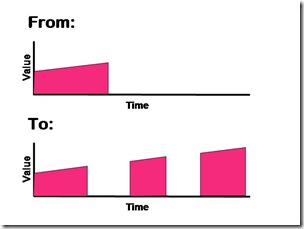 The final, linking, process in the career partnership cycle...
The final, linking, process in the career partnership cycle...
Organisations (line managers, supported by HR) typically use rather reactive approaches to retain their staff. In HRM, companies are generally at least proactive in discussing opportunities within their organisations, but there is still a tendency to pretend the outside world does not exist.
So the unwritten rules in many organisations state that if an employee identified as talent and their line manager see a marvelous job for the employee advertised elsewhere neither person can mention the fact that they have seen this.
Only once the employee has resigned does the organisation take action. At this point, they will use exit interviews as an attempt to re-recruit the employee. If this fails, they will maintain ongoing contact with the ex-employee for six months or more following their departure, in case the career move proves to be unsuccessful. If this does not work, they will invite the ex-employee to join their alumni network hopefully to encourage them to rejoin the organisation again at a later date.
A more proactive, HCM-level approach to retention recognises that the best development opportunities can sometimes be found elsewhere. In this approach, organisations encourage their career partners to review their long-term career development needs and how these needs can best be met – internally or externally. At the appropriate point, organisations may even want to proactively encourage their partners to leave, in order to rejoin as even more valuable talent at a later date.
As the graphic shows, the organisation gains less value from the career partner initially, but gets substantially more value (the coloured areas of the graphics) from them over time.
Implementing this approach would fundamentally alter the talent career dynamic and make it absolutely clear which organizations were operating as true employers of choice. It would also enable organisations to make the most of their career partners and these partners to make the most of their careers.
I'm not suggesting that this approach would be appropriate for many organisations, particularly at the moment, as planning horizons are understandably short-term, but I think these and the other examples from the career partnership cycle, show the opportunity for innovation in management processes.






























0 comments:
Post a Comment
Please add your comment here (email me your comments if you have trouble and I will put them up for you)